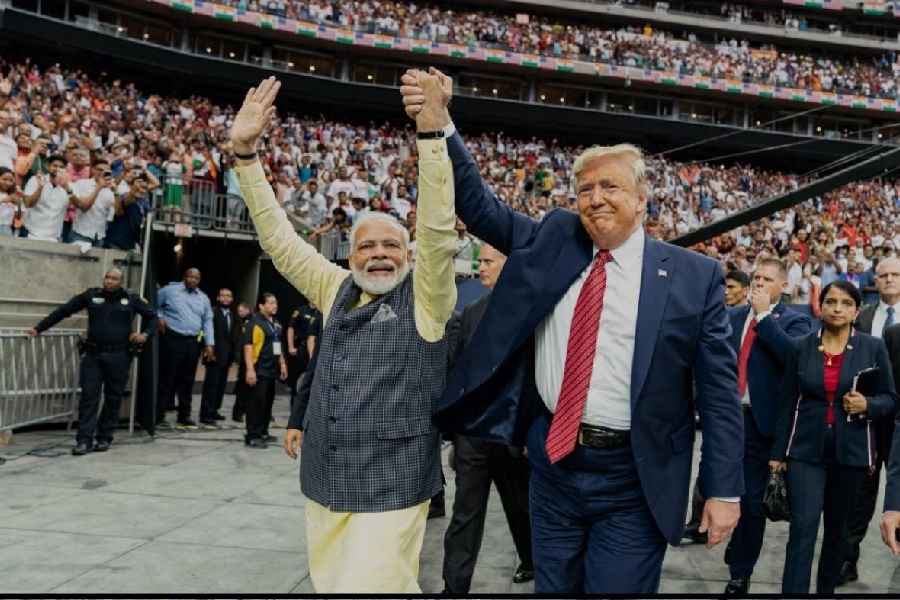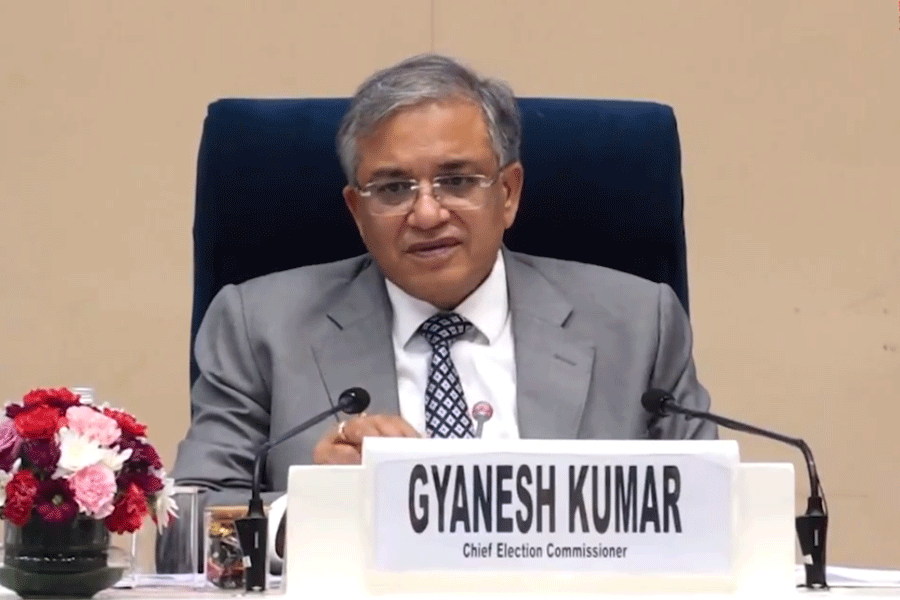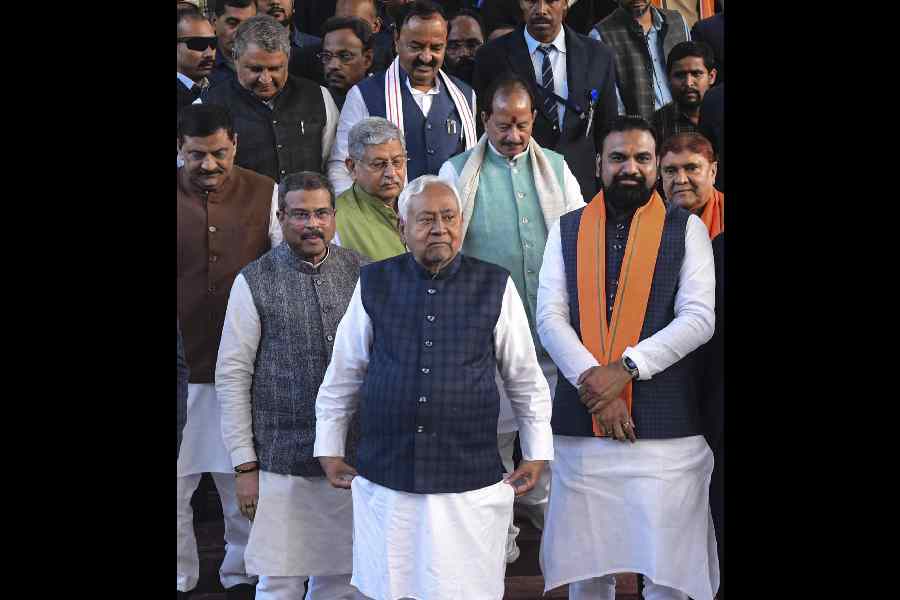When Nirmala Sitharaman observed in a speech on Friday that the “absolute dominance once enjoyed by a hegemon is now contested”, it was hard to miss the not-so-coded reference to the United States of America. The National Democratic Alliance government’s relationship with Trumpian America has clearly come a long way from the ‘Howdy Modi’ lovefest of 2019 in Texas where Narendra and Donald seemed like inseparable ideological twins. Modi went to the extent of breaching diplomatic protocol by openly campaigning for Trump with the slogan, “Ab ki baar, Trump sarkar”. ‘Be careful what you wish for’ ought to be an entry in Modi’s Little Orange Book of governing wisdom whenever it’s published.
How did India get here? ‘Here’ being a geopolitical moment where, in the aftermath of the skirmish that followed Pahalgam, Pakistan is fêted by the US and China, both the hegemon in Sitharaman’s speech and its principal challenger; where the main object of Modi’s foreign policy affections, Trump, has punished India with the highest tariffs imposed by America on any nation; where India’s silence on Gaza has left it more acquiescent in Israel’s slaughter than that country’s most devoted Western allies; where India’s South Asian neighbours are united in their hostility to the subcontinent’s Gulliver and where Modi had to visit China, despite that country’s consistent border aggressions, to signal India’s strategic autonomy.
A part of the answer to this question predates Modi and the NDA era that began with the 2014 election. After the end of the Cold War and the collapse of the Soviet Union, India’s foreign policy intellectuals began to push for the abandonment of non-alignment because there weren’t two superpowers to tack between. This was the unipolar moment, the end of history, the triumph of US-led liberal democracy, and India needed to get with the programme by cosying up to America.
This pivot was urged on by a chorus of experts who laid out the arguments for a tilt toward America that informed the foreign policy choices of both NDA and UPA governments through the new century. India’s trade surplus with America, the growing economic and political clout of India’s US diaspora, the willingness of the US to act in concert with India to constrain China, and the seemingly obvious advantage
of riding the coattails of the hegemon tempted Indian policymakers into what C. Raja Mohan, the doyen of this new tendency, described as pragmatic multi-alignment. The bedrock beliefs of this new stance were a) US economic and military supremacy in the
foreseeable future and b) the possibility of containing China in concert with the West.
The Modi government brought to this growing foreign policy consensus an interesting ideological novelty. After Trump was elected in late 2016 and chose to make his majoritarian instincts the basis of US policy — the executive order banning travel to and from seven Muslim-majority countries was one such example — Modi’s government began to see him as an ideological soulmate. This is true more generally; Modi’s affinity for right-wing, post-fascist leaders like Giorgia Meloni is well-known and the feeling that under the pressure of immigration, politics in European countries was moving to the Right seems to have encouraged him to believe that there was a new concert of majoritarianism emerging in the West which would be a natural partner for Modi’s Hindu rashtra in the making.
To sum up, India was to project itself as the West’s democratic ally in the Indo-Pacific and its non-Muslim counterweight in the global South. India’s rock-solid partnership with Israel, for example, is based on both a strategic military relationship and, in the Modi era, a very close affinity with Likud’s majoritarianism. This idea that the world was increasingly being shaped by a freemasonry of Western majoritarians seems to have seduced Modi’s government into thinking of India as the West’s indispensable partner.
We see this, for example, in S. Jaishankar’s belief that India could continue to trade with Russia in the name of strategic autonomy without blowback or consequences. What he and his government forgot was just how ruthlessly self-interested US
foreign policy has historically been till Trump’s tariffs supplied a reminder. The irony of India’s pro-US posture has always been that it was founded on the idea of unipolarity even as the unipolar moment was buried by China’s rise. It also assumed that the US would be as invested in policing the world, and willing to underwrite the Western alliance, as it had been before.
It turned out that these were radically unsound assumptions. Trump has made it clear that the US is no longer willing to pay for NATO nor, more broadly, for the concert of the West. His reframing of the US security shield as a racket where client states pay for protection, his willingness to dump Ukraine, the increasing scepticism about whether the US is likely to enter into a full-blown war with China over Taiwan make the
notion of the US as a reliable ally in the Indo-Pacific questionable. The Quad, always an unequal forum, now looks delusional.
The open hostility towards India and Indian immigrants expressed by Trump’s ideological allies in the US, the move to scrap the H-1B visa, shouldn’t have taken the government by surprise. After Mexico and El Salvador, India supplies the third-largest number of undocumented people trying to cross into the US. In July this year, there was a series of attacks on Indians in Ireland, a country notable for its openness to immigrants. In a West that increasingly sees itself as a White island of prosperity besieged by legal and illegal migrants from, in Trump’s phrase, “shithole countries”, why did Modi imagine that India, the largest exporter of people in the world, would be exempt?
There were many justifiable critiques of non-alignment, among them its umbilical attachment to a Soviet Union that was dying. Another was the talking up of third world dictators who substituted anti-Westernism for progress and development. A third was an allergy to regional trading blocs like ASEAN. But the concept at least recognised that India was a part of what was then described as the third world, that it had something in common with the predicament of other, post-colonial countries. It was this sense of solidarity that led India to critique the US’s wars in Indo-China, to boycott apartheid South Africa, to critique the expropriation of the Palestinians, and to condemn Britain’s adventurism during the Suez crisis.
In contrast, India’s foreign policy in the years after the Cold War and the era of liberalisation has, in its obsession with America and the West, abandoned the very idea of making common cause with nations of the Global South. Instead of a foreign policy based on solidarity with developing countries and their concerns, India chose a strategy of sanskritisation. By mimicking the rhetoric and the practices of the West’s ‘savarna’ nations, Modi’s government thought it could deal at the world’s top table. This strategy predictably failed because in this epoch of climate change and immigration, a xenophobic West was never going to make room at the top for a country that housed the largest number of poor people in the world.
India’s foreign policy establishment is forever talking about the unsentimental realism of India’s foreign policy after the era of non-alignment. Since Trump has shown us that
this iteration of realism hasn’t worked, perhaps we could start over again? We could begin by acknowledging that our future lies in coming to terms with the countries around us instead of shimmying for a West that doesn’t care.
mukulkesavan@hotmail.com










